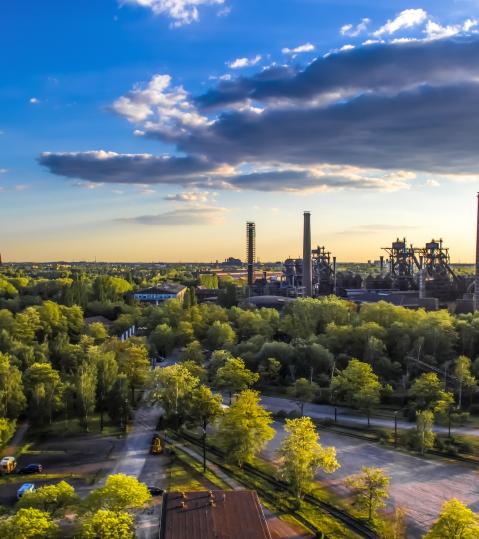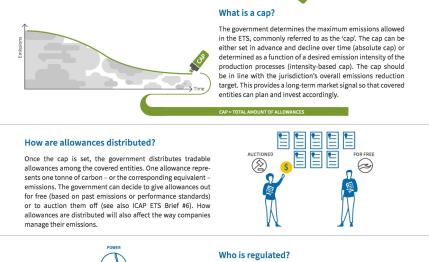Cap Setting

Cap Setting
The cap represents the upper limit of GHG emissions allowed in a scheme, or in other words the total number of allowances (emissions budget) available to covered entities. When defining a cap, regulators seek to reconcile environmental targets with their economic feasibility.
An absolute cap ensures that emissions will not exceed a given limit, and therefore delivers a pre-defined environmental outcome. Allowance price levels are a function of how many allowances are available under the cap, how easy it is for installations to reduce emissions, and other factors such as drivers of consumption and economic growth. These variables need to be taken into consideration when defining a cap. Though the carbon price also depends on these other factors, a generous emissions budget will tend to lead to the market being long and will generate a low allowance price, reducing incentives for abatement. By contrast, a relatively strict emissions budget or ‘tight cap’ means a more limited supply of allowances, or the market being short, resulting in a higher allowance price and a greater fiscal incentive to reduce emissions.
Setting a cap also implies choosing a baseline against which emissions are to be reduced. The cap is usually set in relation to historical emissions, often referred to as a base year, or projected future emissions (e.g., against a business-as-usual scenario). Clear communication of the trajectory, or the path from the basis to the target, helps capped entities plan investment to reduce emissions.
For further information, see:
- Step 4 of ‘Emissions Trading in Practice: A Handbook on Design and Implementation’ by the PMR & ICAP
- ICAP ETS Brief # 1

